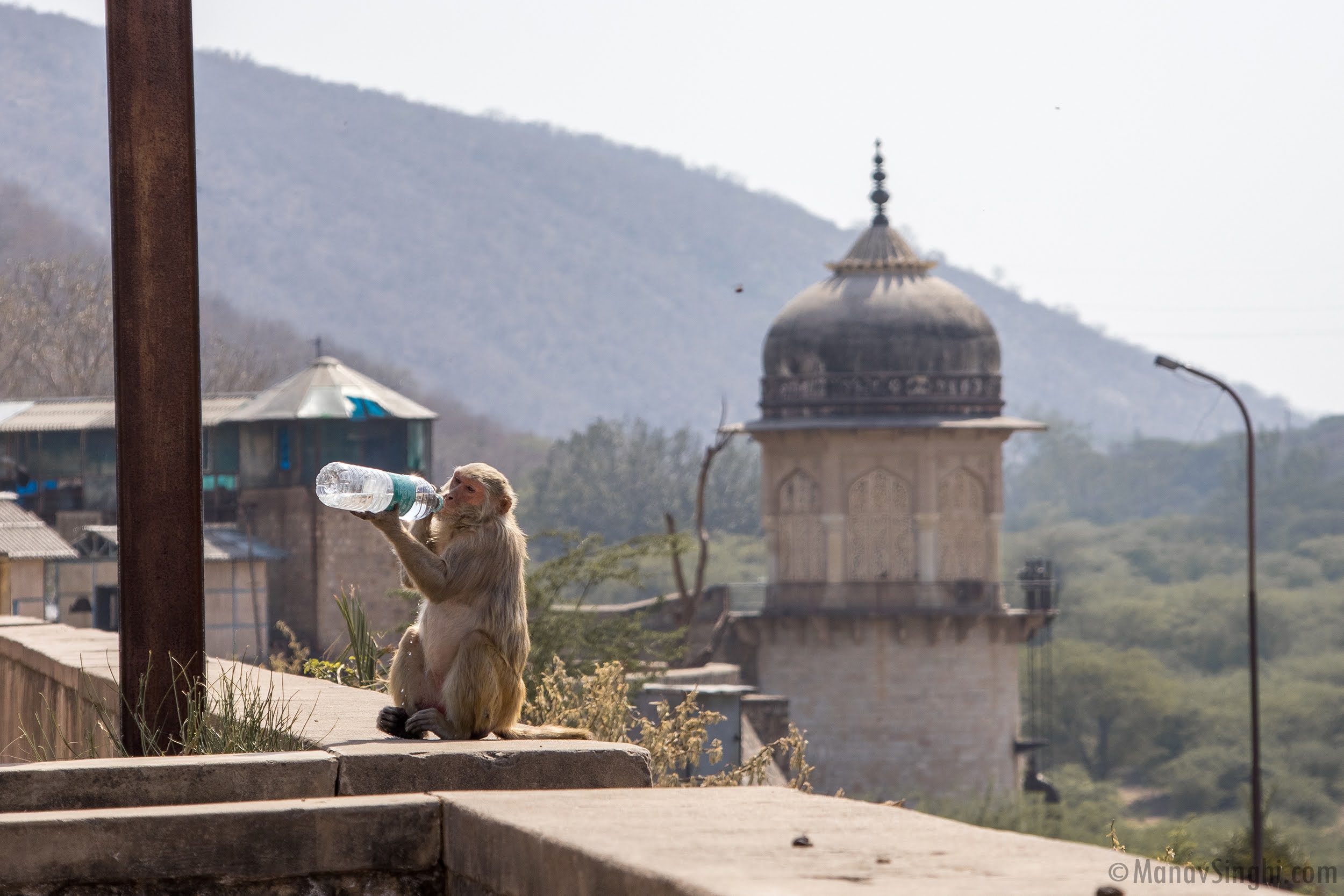 |
| In Search of Water to Quench their Thirst: Picture was Taken on 22-March-2024 |
In the annals of Rajasthan's history lies a story of hope, sustenance, and eventual despair - the tale of Ramgarh Dam. Nestled amidst the arid landscapes of Jaipur, Ramgarh Dam was once a lifeline, providing water to quench the thirst of Jaipur and its surrounding villages. However, the narrative has taken a drastic turn, as Ramgarh Dam now stands devoid of even a single drop of water, a stark reminder of environmental degradation and mismanagement.
Built with high hopes and grand ambitions, Ramgarh Dam was envisioned as a solution to the perennial water scarcity plaguing the region. Constructed on the Banganga River, it was expected to harness monsoon rains and ensure a steady supply of water throughout the year. For decades, the dam served its purpose faithfully, becoming a symbol of resilience and survival in the harsh desert terrain.
Generations of locals relied on the reservoir for their daily needs, from drinking water to irrigation for crops. Jaipur, the bustling capital city, depended on the dam to satiate the thirst of its growing population. The surrounding villages flourished, thanks to the precious resource provided by Ramgarh Dam.
However, as time wore on, cracks began to appear in the once-sturdy facade of this engineering marvel. The effects of climate change, coupled with unsustainable practices, took a toll on the delicate balance of nature. Erratic rainfall patterns, rampant deforestation, and unchecked urbanization gradually depleted the water levels in the reservoir.
Compounding these challenges was the rampant misuse and mismanagement of water resources. Illegal sand mining, unchecked groundwater extraction, and inadequate measures for water conservation exacerbated the situation, hastening the demise of Ramgarh Dam. The authorities, plagued by bureaucracy and apathy, failed to implement sustainable solutions or enforce regulations to protect the precious resource.
Today, the sight of Ramgarh Dam stands as a poignant reminder of what happens when humans neglect their duty as stewards of the environment. Its barren banks and dry bed serve as a testament to the consequences of shortsightedness and neglect. The once-gushing waters have vanished, leaving behind a desolate landscape and shattered dreams.
The desiccation of Ramgarh Dam has had profound effects on the wildlife and flora-fauna of the surrounding ecosystem. Here are some of the impacts:
Loss of Habitat: The drying up of the reservoir has resulted in the loss of crucial habitat for aquatic species such as fish, amphibians, and aquatic plants. Many species that relied on the water body for breeding, feeding, and shelter have been displaced or faced with dwindling resources.
- Disruption of Ecosystem Services: Wetlands and water bodies like Ramgarh Dam provide essential ecosystem services such as water filtration, flood control, and carbon sequestration. The disappearance of these services has disrupted the delicate balance of the local ecosystem, affecting the health and resilience of surrounding flora and fauna.
- Decline in Biodiversity: The loss of water has led to a decline in biodiversity, with many species of birds, mammals, and reptiles dependent on the reservoir disappearing or experiencing population declines. Wetland-dependent species, in particular, have been severely affected, leading to a loss of biodiversity richness in the area.
- Impact on Migratory Birds: Ramsar sites like Ramgarh Dam are often crucial stopover points for migratory birds during their annual journeys. The disappearance of water bodies like the dam has disrupted these migratory patterns, leaving birds without essential rest and refueling spots, potentially impacting their survival.
- Changes in Vegetation: The drying of the reservoir has resulted in changes to the surrounding vegetation. Wetland plants, adapted to thrive in moist conditions, have been replaced by drought-tolerant species. This alteration in plant communities can have cascading effects on the entire ecosystem, influencing food availability and habitat structure for various wildlife species.
- Increased Human-Wildlife Conflict: As wildlife populations are forced to seek alternative sources of food and water, there is an increased likelihood of human-wildlife conflict. Animals may venture into human settlements in search of resources, leading to conflicts with farmers or residents.
Loss of Cultural and Recreational Value: Ramgarh Dam was not only a vital habitat for wildlife but also a cultural and recreational asset for local communities. Its disappearance has deprived people of opportunities for fishing, boating, birdwatching, and other recreational activities, impacting their quality of life and cultural traditions.
However, amidst the desolation, there is still hope for redemption. Efforts are underway to revive Ramgarh Dam and restore it to its former glory. Conservationists, policymakers, and local communities like Revive Ramgarh Lake Campaign are joining hands to implement sustainable water management practices, restore the surrounding ecosystem, and replenish the depleted aquifers.
Lessons learned from the tragic tale of Ramgarh Dam serve as a clarion call for action. It is imperative that we prioritize the conservation and sustainable management of water resources, recognizing their intrinsic value to both human societies and the natural world. Only through collective effort and responsible stewardship can we ensure that future generations inherit a world where tales of despair are replaced by stories of resilience and renewal.
 |
| Finally I Shared My Water, I know This is not the Solution but together We can find One. Picture was Taken on 22-March-2024. |
 |
| Ramgarh Dam, Jaipur and Thirsty Monkeys: Picture was Taken on 22-March-2024 |





Sad state of affairs in Rajasthan.
ReplyDelete